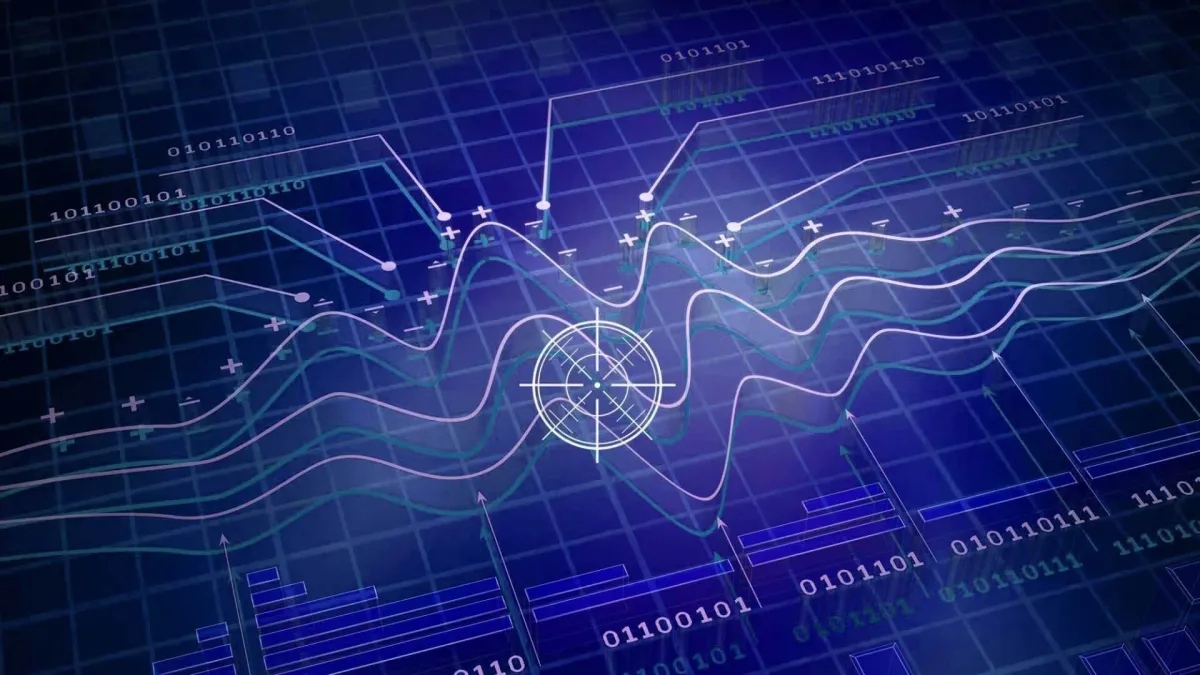Computer science has transformed nearly every aspect of human life in less than a century. From the birth of the first electronic computers to the emergence of artificial intelligence, cloud computing, and quantum technology, the field has evolved at a pace that has continuously reshaped economies, societies, and even human thought itself. Yet, despite its remarkable progress, computer science is still in its early stages. The next fifty years promise to bring advancements that will not merely refine existing technologies but redefine what it means to compute, to think, and to interact with machines. As we look ahead to the middle of the 21st century and beyond, it is clear that the convergence of computing, biology, physics, and intelligence will open up new frontiers that challenge our imagination and understanding of the digital universe.
The Evolving Nature of Computing
At its core, computer science is the study of computation—how to process information, solve problems, and automate tasks. Over the past fifty years, the field has expanded far beyond its mathematical and engineering roots. Today, it encompasses artificial intelligence, data science, cybersecurity, human-computer interaction, and many other subfields. Yet, the fundamental principles of algorithms, logic, and representation of information continue to form its foundation.
In the next fifty years, computer science will likely evolve from a discipline centered on digital computation to one that integrates multiple paradigms of information processing, including quantum, biological, and neuromorphic computing. This transformation will not be linear but exponential, as the boundaries between hardware, software, and data blur. Computing will become more adaptive, distributed, and embedded in the physical and biological fabric of the world, making the act of “using a computer” almost invisible.
The End of Classical Scaling and the Rise of New Architectures
For decades, Moore’s Law—the observation that the number of transistors on a chip doubles approximately every two years—was the engine driving exponential growth in computing power. This relentless miniaturization fueled advances from personal computers to smartphones and supercomputers. However, as transistor sizes approach atomic scales, physical limits such as quantum tunneling and heat dissipation have slowed this pace. The industry has responded with new architectural innovations like multi-core processors, specialized chips such as GPUs and TPUs, and 3D chip stacking.
In the coming decades, computer scientists and engineers will increasingly turn to alternative paradigms to extend computational growth. Quantum computing, neuromorphic computing, and molecular computing represent three major frontiers that may replace or complement classical digital architectures. These new approaches are not just incremental improvements but fundamental shifts in how computation is performed.
Quantum Computing and the Quantum Revolution
Quantum computing is perhaps the most anticipated revolution in the future of computer science. Unlike classical computers, which process bits that represent either 0 or 1, quantum computers use qubits—quantum bits that can exist in superpositions of states. This property, combined with entanglement and interference, allows quantum computers to perform certain computations exponentially faster than classical systems.
Over the next fifty years, quantum computing could transform fields ranging from cryptography and optimization to materials science and pharmaceuticals. Problems that are currently intractable, such as simulating complex molecules or optimizing global logistics systems, may become solvable within seconds. Researchers are already developing error-corrected quantum processors capable of maintaining coherence over long timescales, a crucial step toward large-scale quantum computation.
Quantum communication and quantum networks will also play a major role in the next generation of secure data transmission. Quantum key distribution promises theoretically unbreakable encryption, fundamentally changing cybersecurity. Furthermore, hybrid quantum-classical systems will likely emerge, where quantum processors handle specific tasks while classical systems manage broader computation and control.
By 2075, quantum computing could be as ubiquitous as cloud computing is today, integrated seamlessly into everyday infrastructure. The challenge will not only be building stable quantum hardware but also developing new algorithms, programming languages, and data structures suited for the quantum paradigm. The entire concept of computational complexity will need to be redefined in a world where quantum advantage becomes commonplace.
Neuromorphic and Brain-Inspired Computing
While quantum computing aims to leverage the laws of physics, neuromorphic computing draws inspiration from biology—specifically, from the structure and dynamics of the human brain. Traditional computers process information sequentially, but the brain operates through massively parallel networks of neurons connected by synapses. Neuromorphic chips mimic this architecture, using spiking neural networks that emulate biological neurons and synapses to achieve energy-efficient, adaptive computation.
Over the next half-century, neuromorphic systems may become central to artificial intelligence and robotics. These machines could process sensory information—vision, sound, touch—more naturally, learn continuously, and operate in real time with minimal energy consumption. Neuromorphic processors like Intel’s Loihi or IBM’s TrueNorth are early prototypes of this idea, but the coming decades will see these designs scale up to billions of artificial neurons.
The fusion of neuroscience and computer science could lead to breakthroughs that blur the line between biological and artificial intelligence. Brain-computer interfaces (BCIs) may connect neuromorphic processors directly with human neural circuits, enabling seamless interaction between minds and machines. Such systems could revolutionize healthcare, communication, and education, allowing people to augment their cognitive abilities or recover lost functions.
By the mid-21st century, neuromorphic computing might redefine the meaning of artificial intelligence itself. Rather than being programmed, intelligent systems will evolve, self-organize, and learn from experience much like living organisms. This shift could mark the beginning of a new era of “living computation,” where machines are not tools but cognitive partners.
Artificial Intelligence and the Expansion of Machine Cognition
Artificial intelligence has already transformed the 21st century, but what lies ahead in the next fifty years will make today’s AI seem primitive. Current AI systems rely heavily on large datasets and computational brute force to achieve remarkable but narrow capabilities. Future AI will move beyond pattern recognition to reasoning, creativity, and autonomous understanding.
The next frontier is Artificial General Intelligence (AGI)—a form of AI that can perform any intellectual task a human can, with flexibility and self-awareness. While opinions differ on when AGI will emerge, many researchers predict that significant progress will occur within the next few decades. The development of AGI would be a transformative moment in human history, comparable to the invention of writing or electricity.
In the decades following AGI, we may see the rise of Artificial Superintelligence (ASI), systems that surpass human intelligence across all domains. Managing this transition safely will be one of the greatest challenges of computer science and society. Ethical frameworks, alignment research, and governance models will need to evolve in parallel to ensure that AI serves humanity’s interests rather than undermining them.
AI will also become more deeply embedded in the physical world. Robotics will evolve from rigid, preprogrammed machines to adaptive, autonomous entities capable of working alongside humans in complex environments. Nanobots and bio-integrated robots could operate within the human body, diagnosing and repairing tissues at the cellular level. The boundary between software, hardware, and organism will gradually dissolve.
The Convergence of Biology and Computing
The fusion of computer science and biology will redefine both fields over the next fifty years. Advances in synthetic biology, bioinformatics, and computational genetics are already transforming medicine and biotechnology. DNA itself can be used as a medium for computation and data storage, offering densities far beyond silicon-based technologies. DNA computing uses the chemical reactions of nucleic acids to solve problems in parallel, promising a new form of biocomputation that operates at molecular scales.
In the coming decades, biological systems may be programmed like computers. Cells could be engineered with “genetic circuits” that respond to environmental signals, forming biological processors capable of performing computation within living organisms. This convergence will give rise to programmable life forms that can produce energy, synthesize materials, or even repair ecosystems autonomously.
The integration of digital and biological computation could also enable personalized medicine on an unprecedented scale. AI-driven models will simulate entire human organs, allowing for drug testing and treatment optimization without the need for physical experimentation. The “digital twin” concept—virtual replicas of biological systems—will become standard in healthcare and environmental science. As the cost of sequencing and modeling continues to fall, the boundary between biological evolution and technological design will grow increasingly indistinct.
The Future of Software Development
In the next fifty years, the way humans create software will change as dramatically as the way we use it. Traditional programming languages and manual coding will give way to automated, intelligent systems capable of generating and optimizing code autonomously. Already, AI-driven code generation tools can write functions, detect bugs, and refactor systems. In the future, such systems will evolve into self-programming environments where developers describe goals, and AI synthesizes entire architectures to achieve them.
Software development will also become more biological and evolutionary in nature. Instead of designing programs from scratch, engineers will “evolve” solutions by allowing algorithms to mutate, adapt, and compete for optimal performance. These systems will operate like digital ecosystems, continuously improving themselves based on feedback and usage.
Furthermore, software will become increasingly modular, distributed, and decentralized. Edge computing and microservices will give rise to highly adaptive systems that function across vast, interconnected networks of devices. As these systems grow more complex, new theories of software verification, reliability, and ethics will emerge to ensure their safety and transparency.
By 2075, software may no longer be “written” in the traditional sense. Instead, it will be grown, evolved, and co-created between humans and intelligent systems. The distinction between software developer and AI collaborator will vanish as programming becomes a dialogue rather than an act of instruction.
Cybersecurity in a Post-Digital World
As computation becomes more pervasive, securing information will become one of the defining challenges of the next fifty years. The rise of quantum computing threatens to break traditional encryption methods, necessitating new quantum-resistant algorithms and cryptographic systems. Post-quantum cryptography will become a cornerstone of cybersecurity, ensuring that sensitive data remains protected even in an era of quantum-powered adversaries.
Artificial intelligence will also transform the landscape of digital security. Autonomous security systems will predict, detect, and neutralize cyber threats in real time, adapting faster than human operators could respond. However, the same technologies will also empower attackers, leading to a constant arms race between defense and offense in cyberspace.
Moreover, as more devices become interconnected through the Internet of Things (IoT) and beyond, the attack surface for malicious actors will expand dramatically. Future cybersecurity strategies will require global cooperation, ethical AI governance, and resilient architectures designed with security as a fundamental property rather than an afterthought.
The next generation of cybersecurity will also need to address privacy and autonomy in a world where data is omnipresent. Protecting personal and collective information will become both a technological and philosophical challenge, balancing transparency, freedom, and trust.
The Integration of Computing and Physical Reality
The next fifty years will witness the complete integration of computation with the physical world. Ubiquitous computing—where digital systems are embedded into every aspect of the environment—will become the norm. Smart cities, autonomous vehicles, and intelligent infrastructure will function as cohesive networks driven by real-time data.
Augmented reality (AR) and virtual reality (VR) will evolve far beyond current entertainment and training applications. Future immersive environments will merge seamlessly with physical surroundings, creating hybrid spaces where digital and real worlds coexist. With the advent of brain-computer interfaces, even the distinction between thought and computation may blur, allowing humans to interact with digital systems using mental commands.
By mid-century, the concept of the “metaverse” will mature into a fully integrated, persistent information layer that overlays physical space. This digital continuum will serve as the interface between people, machines, and data, enabling new forms of creativity, communication, and commerce. The entire planet may effectively become a computational organism, continuously sensing, processing, and adapting to the needs of its inhabitants.
Data, Ethics, and the Future of Human Values
The exponential growth of data will continue to shape computer science and human society. As data becomes the foundation of decision-making, its collection, interpretation, and use will raise profound ethical and philosophical questions. Who owns data? How should algorithms make decisions that affect human lives? How can we ensure fairness, accountability, and transparency in systems that learn from biased information?
In the next fifty years, computer science will increasingly engage with ethics, philosophy, and law to establish frameworks for responsible innovation. Concepts such as digital sovereignty, algorithmic justice, and data dignity will guide the development of future technologies. As AI systems gain autonomy, ensuring that they align with human values will become a central concern of both science and policy.
Moreover, the relationship between humans and technology will need to be redefined. As machines become more intelligent and capable, society will need to grapple with questions of identity, agency, and purpose. The future of computer science will thus be as much about understanding humanity as about building machines.
The Global Impact and Democratization of Computing
The democratization of computing will be one of the most powerful forces of the next half-century. As computation becomes cheaper, smaller, and more accessible, its benefits will reach even the most remote parts of the world. Education, healthcare, agriculture, and environmental management will all be transformed by localized, intelligent systems powered by global networks.
Cloud and edge computing will bridge the digital divide, while open-source collaboration will continue to drive innovation at a global scale. The emergence of decentralized technologies like blockchain and distributed ledgers will empower individuals and communities to control their own data and economies. The next era of computer science will not only be defined by technological breakthroughs but by how those breakthroughs are shared and governed.
Global collaboration will be essential to ensure that the benefits of computation are distributed equitably. The future of computer science will depend not just on algorithms and hardware but on the shared human values that guide their use.
Conclusion
The next fifty years of computer science will be an era of profound transformation. The convergence of quantum mechanics, artificial intelligence, biology, and information theory will redefine the nature of computation itself. Machines will learn, evolve, and even think; computers will exist not only in our devices but in our bodies, environments, and minds. Software will be alive, hardware will be molecular, and intelligence will be both artificial and organic.
As we stand at the threshold of this new epoch, the ultimate question is not merely what computers will be able to do, but what humanity will choose to do with them. The future of computer science will be shaped as much by our ethics, imagination, and collective purpose as by our technical prowess. It holds the promise of a world where computation becomes as natural and pervasive as air—a world where the boundary between human and machine, between thought and reality, dissolves into a seamless continuum of intelligence and creation.






